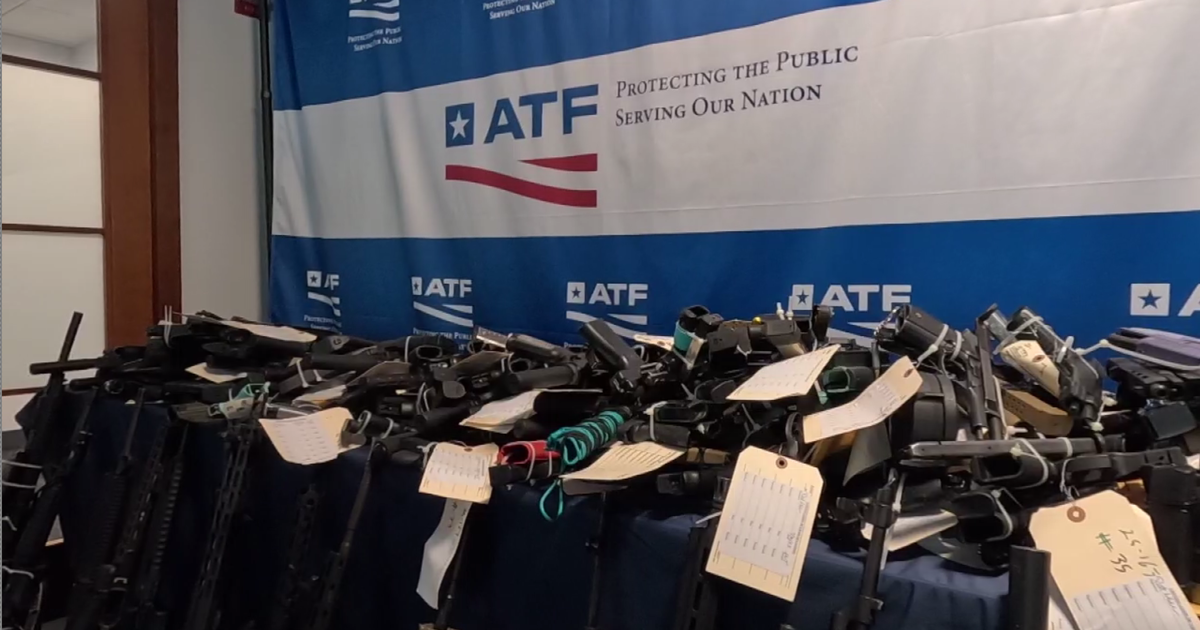The Bureau of Alcohol, Tobacco, Firearms and Explosives has joined the Chicago Police Department in a mission to take dozens of guns off the streets.
The goal is to stop violent crime before it happens.
At the Crime Gun Intelligence Center, or CGIC, investigators examine every piece of evidence in detail. Christopher Amon, the special agent-in-charge for the ATF Chicago Division explained that the markings on a shell casing preserve clues long after a crime scene is cleaned up.
“Every firearm leaves unique markings on the cartridge casing,” Amon said.
Chicago police Chief of Detectives Antoinette Ursitti said in one recent case involving a firearm, the scene was a playground — Riis Park on the West Side of Chicago.
“The person was in a park who had been on a scooter that was discharging a firearm into the air,” said Ursitti. “When you think about a park, and when you think about the people that enjoy our parks in the city, to have to see something like that is absolutely terrifying.”
The weapon in that case, police said, was a black Glock 23 .40-caliber pistol with an extended magazine and a switch. That switch is a small piece of metal that can transform an already-deadly weapon into a machine gun capable of mass destruction.
“They can inflict maximum damage,” said Amon.
Amon showed CBS News Chicago one gun the team recovered with a machinegun conversion device, or MCD, attached.
“You had a 50-round drum magazine, so you had the ability to unload this entire magazine — 50 rounds — within two seconds,” said Amon.
Prosecutors said Eddie Arguelles, who was taken into custody after the shooting in Riis Park, was also teaching others how to install and use such switches on social media. This was a clue uncovered at the CGIC.
The CGIC is a collaborative mission that brings the CPD, the ATF, and other law enforcement agencies into the same room as prosecutors. They use evidence such as shell casings to find and charge the city’s most violent criminals and repeat offenders.
Amon explained when a gun or a bullet casing is run through the system at the CGIC, law enforcement can connect a gun to previous crimes — and prosecutors can bring more serious charges because of the common thread of the weapon.
Police data shared with CBS News Chicago show of the guns recovered in the city, 50% found with a machine gun conversion device attached are linked to another shooting.
That is why for the last two and a half months, officers assigned to CGIC have been going on offense — focused on getting the switches off the street.
Amon showed CBS News Chicago an evidence table with 64 such devices laid out on it.
“These 64 machine gun conversion devices that you see here on this table represent 64 shootings that we were able to stop by their interdiction,” Amon said.
In Chicago, the CPD said it recovered 604 MCDs in 2024, up from 81 in 2020.
Meanwhile, on the other side of the same room at the CGIC was a pile of 171 firearms.
“When you look at this pile of guns that’s in this room, what that means is these are not in the hands of criminals that are going to hurt anybody without a second thought,” said Ursitti.
Together, officers at CGIC have arrested 40 suspects during the course of their recent multi-week mission. Arguelles is one of them.
“We are proactive, and we are going to do everything that we can to make sure that nobody in the city of Chicago has to live in fear that they cannot go out in the street because of firearms and shootings,” said Ursitti.
Before the CGIC came online, it was taking the CPD about six months to get ballistic evidence back. Now with the partnership in place, the turnaround time is 24 to 48 hours — which helps authorities solve crimes at a much faster pace than before.
